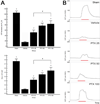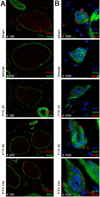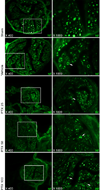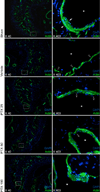Pentoxifylline promotes recovery of erectile function in a rat model of postprostatectomy erectile dysfunction
- PMID: 21036464
- PMCID: PMC3046299
- DOI: 10.1016/j.eururo.2010.10.034
Pentoxifylline promotes recovery of erectile function in a rat model of postprostatectomy erectile dysfunction
Abstract
Background: Cavernous nerve (CN) injury during radical prostatectomy (RP) causes CN degeneration and secondary penile fibrosis and smooth muscle cell (SMC) apoptosis. Pentoxifylline (PTX) is a phosphodiesterase inhibitor that further inhibits multiple cytokine pathways involved in nerve degeneration, apoptosis, and fibrosis.
Objectives: To evaluate whether PTX enhances erectile function in a rat model of CN injury. DESIGN, SETTING AND INTERVENTIONS: Forty male Sprague-Dawley rats underwent CN crush injury and were randomized to oral gavage feeding of phosphate-buffered saline (vehicle) or PTX 25, PTX 50, or PTX 100 mg/kg per day. Ten animals underwent sham surgery and received vehicle treatment. Treatment continued for 28 d, followed by a wash-out period of 72 h. An additional eight rats underwent resection of the major pelvic ganglion (MPG) for tissue culture and examination of direct effects of PTX on neurite sprouting.
Measurements: Intracavernous pressure recording on CN electrostimulation, immunohistologic examination of the penis and the CN distal to the injury site, and length of neurite sprouts in MPG culture.
Results: Daily oral gavage feeding of PTX resulted in significant improvement of erectile function compared to vehicle treatment in all treated groups. After treatment with PTX 50 and PTX 100 mg/kg per day, the expression of neuronal nitric oxide synthase in the dorsal penile nerve was significantly higher than in vehicle-treated rats. Furthermore, PTX treatment prevented collagen deposition and SMC loss in the corpus cavernosum. In the CN, signs of Wallerian degeneration were ameliorated by PTX treatment. MPG culture in medium containing PTX resulted in a significant increase of neurite length.
Conclusions: PTX treatment following CN injury in rats improved erectile recovery, enhanced nerve regeneration, and preserved the corpus cavernosum microarchitecture. The clinical availability of this compound merits application in penile rehabilitation studies following RP in the near future.
Copyright © 2010 European Association of Urology. Published by Elsevier B.V. All rights reserved.
Conflict of interest statement
Figures






References
-
- Walz J, Burnett AL, Costello AJ, et al. A critical analysis of the current knowledge of surgical anatomy related to optimization of cancer control and preservation of continence and erection in candidates for radical prostatectomy. Eur Urol. 2010;57:179–192. - PubMed
-
- Bella AJ, Lin G, Tantiwongse K, et al. Brain-derived neurotrophic factor (BDNF) acts primarily via the JAK/STAT pathway to promote neurite growth in the major pelvic ganglion of the rat: Part I. J Sex Med. 2006;3:815–820. - PubMed
-
- Canguven O, Lagoda G, Sezen SF, Burnett AL. Losartan preserves erectile function after bilateral cavernous nerve injury via antifibrotic mechanisms in male rats. J Urol. 2009;181:2816–2822. - PubMed
Publication types
MeSH terms
Substances
Grants and funding
LinkOut - more resources
Full Text Sources
Other Literature Sources
Medical

